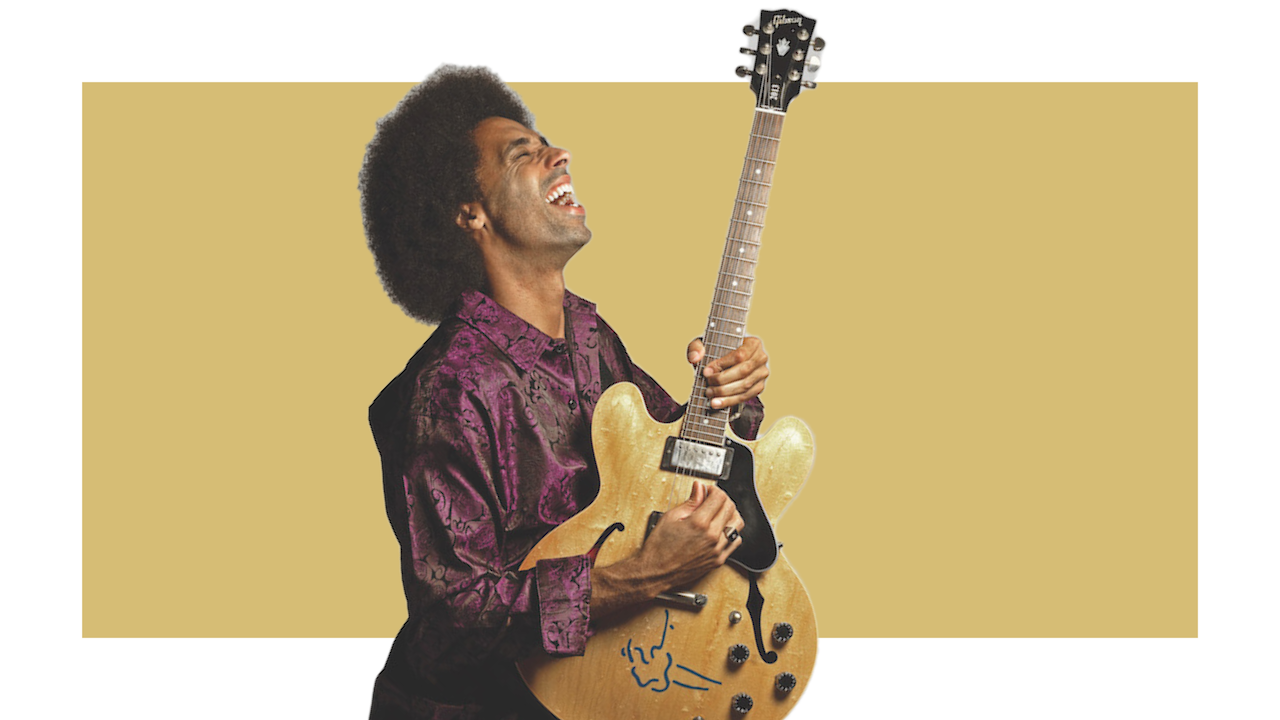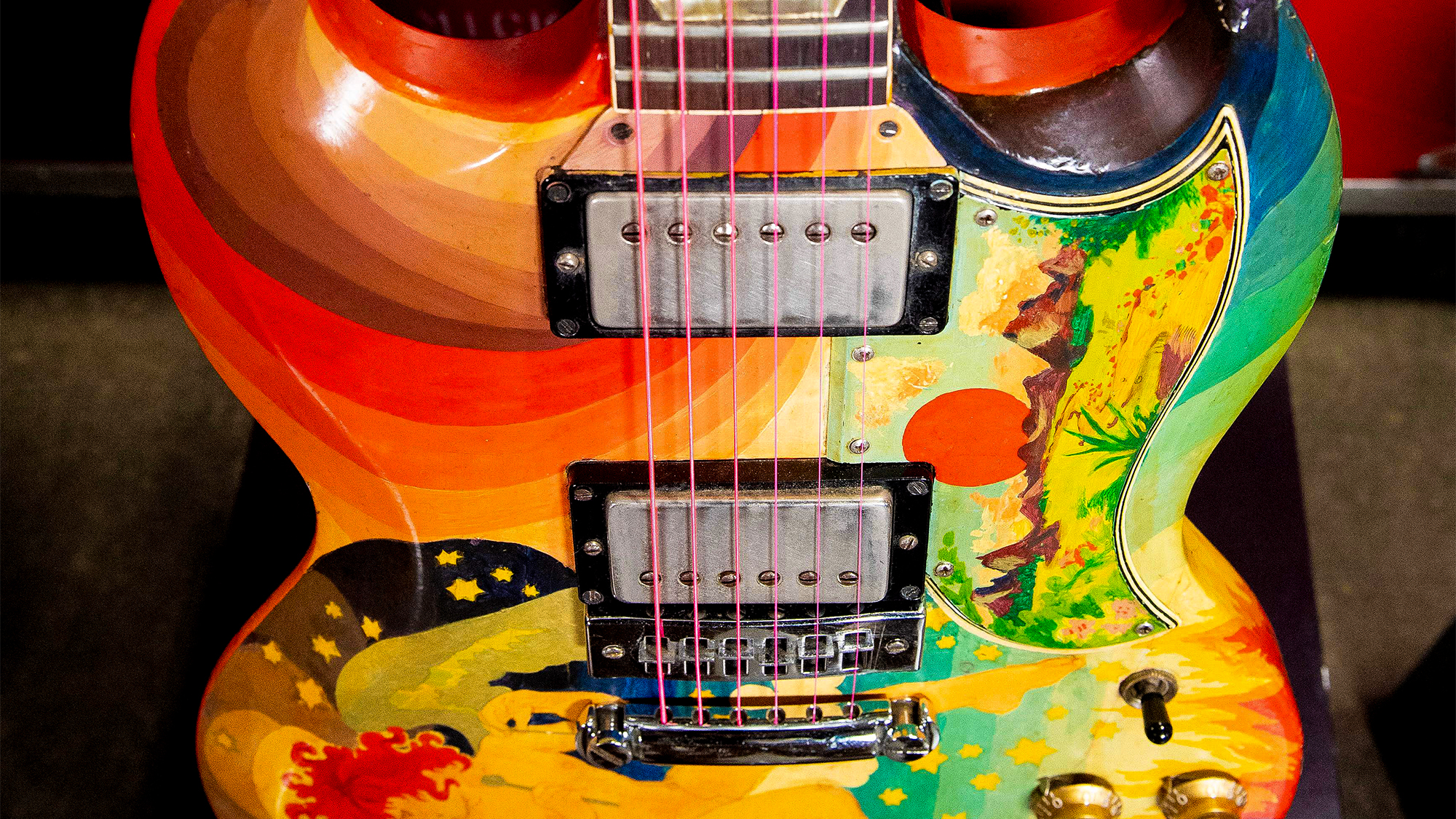20 years ago, seeing Buddy Guy changed his life. Now Selwyn Birchwood is an award-winning guitarist who's played with Buddy and recorded with his producer…
Selwyn Birchwood went to his first blues gig, aged 18. Ten years later, he won the Blues Foundation's Best Guitarist Award. 10 years on from that, his new album Exorcist is one of the blues albums of the year

Selwyn Birchwood can recall exactly when he committed himself to the blues. “When I first heard Jimi Hendrix as a kid, it sounded to me like I was hearing music from another galaxy,” the Florida-based guitarist/vocalist/lap-steel player explains. “I started reading a biography about him to find out what possessed someone to make sounds like that, and it was there I first came across the name Buddy Guy. Coincidentally, Buddy happened to be playing in town that same week, so I bought a ticket, not knowing what to expect.
“Now, anyone who’s seen Buddy live knows what an incredible showman he is, and it was then and there I said to myself, 'Whatever this music is, this is what I want to learn, and this is what I want to do.'”
Birchwood’s devotion to the blues quickly took root. While still in his teens, he was asked to join Sonny Rhodes’ band. In 2013 he snagged the Blues Foundation’s Albert King award for Guitarist of the Year, which led to a deal with the legendary Alligator Records label. Now 38, Birchwood has established himself as one of the preeminent voices in contemporary blues. His smoky baritone vocals blend seamlessly with his fiery and emotive electric guitar and lap-steel lead lines, and his original compositions cleverly blend elements of traditional blues, cool jazz, funk, Stax-flavored R&B and psychedelic rock into a cohesive and compelling artistic statement.
With his latest release, Exorcist, Birchwood feels he’s come full-circle in some ways. “I still have the ticket stub from that Buddy Guy concert — it was September 2002,” he reveals. “Now it’s 20 years later and not only have I had the chance to perform with Buddy onstage, I got to work with Tom Hambridge, who won a Grammy for producing Buddy.”
The 13 tunes on Exorcist are a masterfully produced, arranged and executed sonic tour de force, from the funky headline-inspired tongue-in-cheek Florida Man to the autobiographical Underdog and the expansive and cathartic title track.
It seems as if lap steel is becoming increasingly popular in blues music. What inspired you to start playing one?
When I was 19, I was hired to be in Sonny Rhodes’ band. He became a mentor to me, and he was the first person I saw and heard play a lap steel in person. During my first tour with him, I decided I was going to save up my money and buy one as soon as I could, because I was so blown away by the sound.
All the latest guitar news, interviews, lessons, reviews, deals and more, direct to your inbox!
What kind of lap steel do you currently play and how often do you use it?
I currently have a couple of Gibson lap steels from the ’50s that I keep in E tuning [low to high, E, B, E, G#, B, E ]. On the new album I play lap steel on Swim at Your Own Risk and Underdog. During a typical show I’ll alternate between guitar in standard tuning, slide guitar in open tunings and lap steel. I usually bring the lap steel out toward the end of the set, because people really seem to dig on that.
What slide tunings do you normally use?
It depends on the song, but for example, Florida Man is in open D tuning — D, G, D, G, B, D. I’ll also use open E and open D [low to high, D, A, D, F#, A, D]. Lately I’ve been using these Ernie Ball Comfort Slides that have silicone inside, because it fits pretty snugly to my finger and gives me more control.
You pose with two Gibson semi-hollowbodies on the cover of Exorcist. Are those your main guitars?
Yes. I’m very partial to hollowbodies and semi-hollowbodies. The cover shows my Gibson ES-345 and ES-335, which was the prize when I won the Albert King Award at the 2013 International Blues Challenge. You can see the International Blues Foundation Logo on it. I also use an ES-135 that I like to play at home, and a smaller-bodied ES Les Paul that I take on the road with me. They only made that guitar between 2014 and 2016. I guess people didn’t like them, but I love mine.
What’s the rest of your signal chain?
First off, I only use Mogami guitar cables. When you A/B them against other cables, it’s amazing how clear they are. For amps, I use a 1980s Peavey Bandit that Kingfish Ingram and Mr. Sipp turned me on to for recording solos. For everything else, including live performances, I use a 1x12 Fender Deluxe Reverb reissue. For effects, I just use a Dunlop Cry Baby Mini Wah and an Ibanez Tube Screamer Mini. I figure if I can’t do it with a wah and a Tube Screamer, I can’t do it. I’m also concerned about stuff failing live, so I like to keep it simple. We’re often doing these festivals where there’s a 10-minute changeover between acts, so I like to travel light.
Can you talk a little bit about your approach to improvisation?
For me, it’s mostly about having your ears open and responding to what the band is doing. I’ll try to listen for what’s not there and play what I hear. I’m not a highly-schooled musician, so I just try to match my playing to the feeling in the song. It’s not based on what techniques I know as much as on what I think will make the song better.
You have a real ensemble approach to your arrangements. The guitar certainly cuts through but it doesn’t dominate.
I’ve always been drawn to music where there was interplay between instruments, and stuff can breathe. I think it makes the music more interesting if you let the other colors through. I didn’t put a guitar solo on some songs, because I felt they simply didn’t need them.
Regi Oliver’s baritone sax often plays a song’s riffs. When did you decide to incorporate that unique sound into your band lineups?
When I first got my group together, I didn’t have a keyboardist and Regi was playing tenor sax. He switched over to bari because he felt he could comp behind the guitar better with it, and over time it just grew into our sound. With the addition of keyboards, it gives the music a lot of heft and it’s allowed me to write with that in mind. I don’t think there are other bands out there that sound like we do, and I feel like on this album we’ve really found our sound.
Is there a song on Exorcist that you feel best encompasses your sound?
If I had to choose one, I’d say it’s the title track. I try to take the things that I enjoy listening to and put them into my own music. I feel like that song really has a lot of these elements — arrangement, emotional content and storytelling. The instrumentation included extra percussion, female background vocalists and the whole horn section. You can even hear us hitting an anvil with a piece of metal in the background. There’s a lot going on in there, and it all builds into this big, intense cacophony of musical sounds.
I figure that people don’t normally gloss over the title track, and when we got done recording it, I said, “Man this has to be the title of the record!”
Exorcist is out now and available to buy or stream



